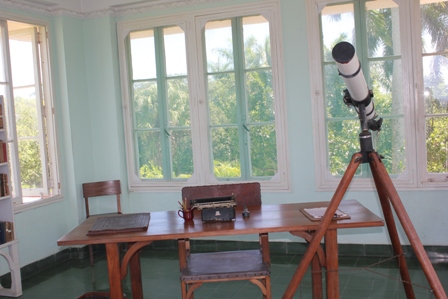NPCA Goes To Cuba! Part VI
In 1939 when Martha Gellhorn went to Havana to join Hemingway he was still living at the Ambos Mundos and she was upset that he was living, as Kenneth S. Lynn reports in his book, Hemingway, “in the squalor of his room.”
Gellhorn would say years later, “I am really not abnormally clean. I’m simply as clean as any normal person. But Ernest was extremely dirty, one of the most unfastidious men I’ve ever known.”
She went looking for a house where they might life and came across a newspaper listing of a fifteen-acre estate called Finca Vigia on a hilltop overlooking the village of San Francisco de Paula, fifteen miles from downtown Havana.
Lynn in his Hemingway book describes Finca Vigia this way: “The one-story farmhouse, a sprawling, Spanish-style structure with a sixty-foot living room, had most decidedly seen better days, and the furnishings were hideous. Further-more, the outdoor swimming pool was filled with suspiciously green water and huge weeds had obliterated the surface of the fenced-in tennis court. Although Hemingway thought the joint was a hopeless mess and not worth the bargain rent of one hundred dollars a month, its very dilapidation appealed to Martha’s imagination. Drawing on her own funds at first, she hired a painter, a carpenter, and two gardeners and began the process of bring the Finca back to life.
Martha added a “special workroom” for Hemingway but he preferred to write in his bedroom, with its “white walls, yellow-tiled floor, and windows facing south and east that let in oceans of light and lovely breezes.”

a room in the house, not his office
The move to this small farm in Cuba was an extremely productive period for Hemingway. Here, in his Finca Vigia he finished For Whom the Bell Tolls, writing at time six to seven thousand words a week.The novel was published in late October of 1940 and was dedicated to Martha Gellhorn. Two weeks after its publication, he married Martha in Cheyenne, Wyoming. On December 28, 1940, Hemingway bought Finca Vigia for $18,500 and would live there for the majority of his time until July 25, 1960, when it is said that the American Ambassador, Philip Wilson Bonsal, forced Hemingway to abandon the island.

No comments yet.
Add your comment